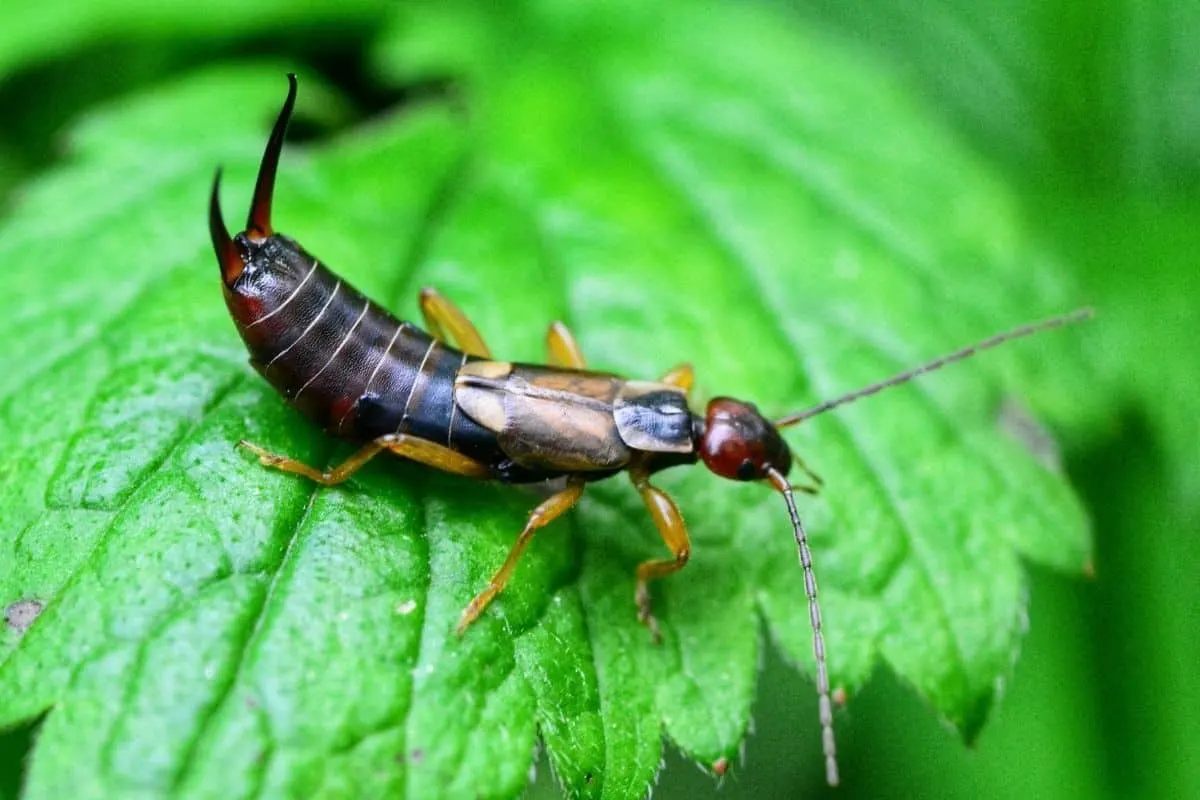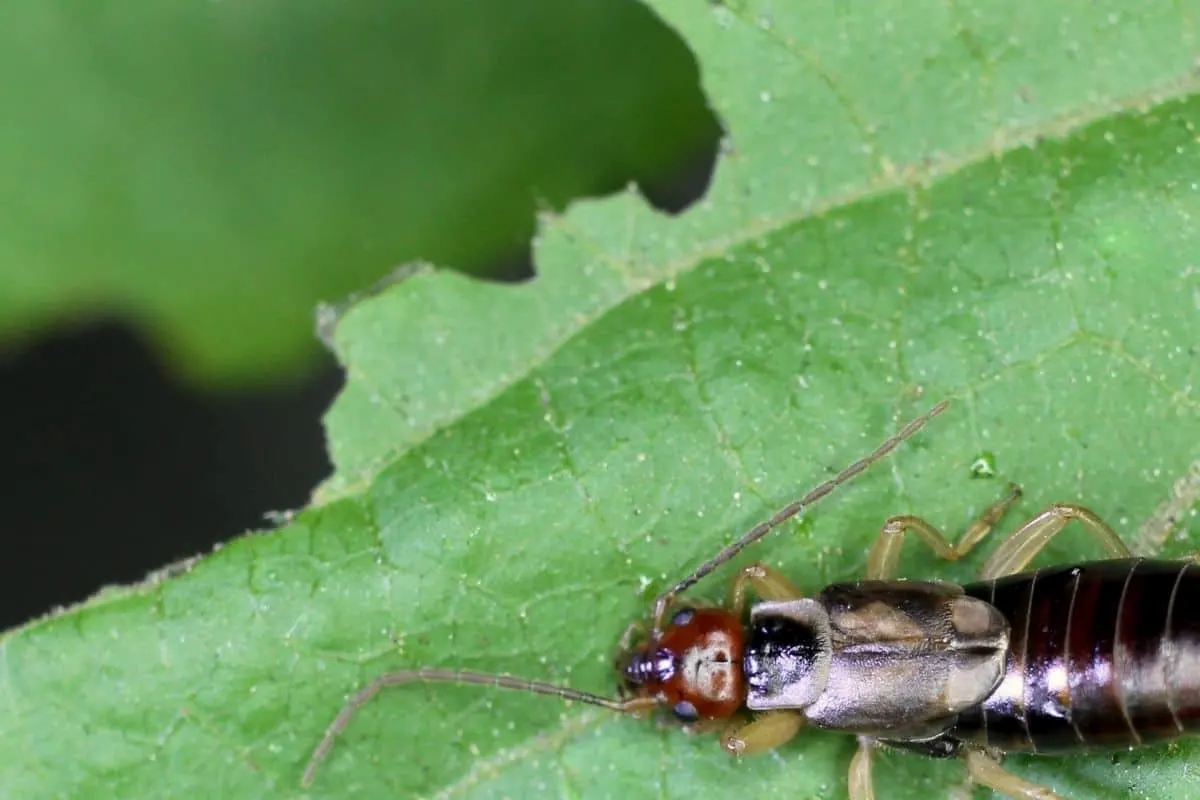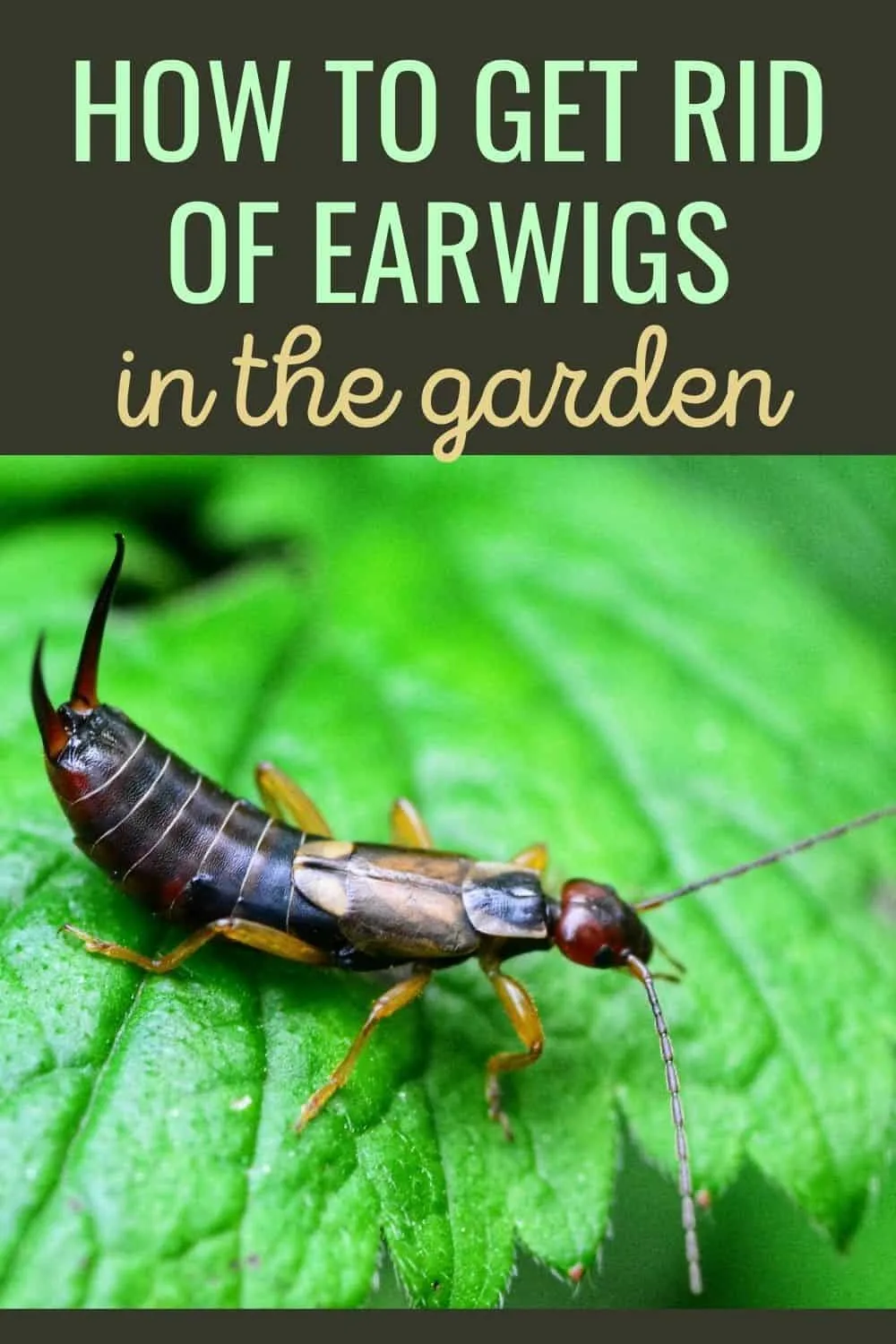You’ve likely seen those evil ant-looking insects with wicked pincers at the tip of their abdomen in your house and heard creepy stories as a child of them crawling in people’s ears. Yet despite their terrible reputation and intimidating appearance, earwigs rarely cause problems either in the home or in the garden. If you do find an infestation of earwigs causing significant damage to your plants, you will want to read the following tips we have compiled on how to get rid of earwigs in the garden.

How to Get Rid of Earwigs in the Garden
Primarily scavengers, earwigs eat damaged and decaying plant matter and smaller insects as well as healthy plant material. This makes them both beneficial insects and pests! Given their broad diet, earwigs don’t often cause significant damage in the garden, so take a closer look before deciding that they need to be controlled.
How to identify earwigs
Earwigs have flat, reddish-brown bodies and tend to be about 3/4 inch in length. Their most distinguishable characteristic, of course, is the pair of pincers, or cerci, at the tip of their abdomen. Males have larger, strongly curved cerci, while female cerci are straighter, more slender, and closer together.
Immature earwigs, including nymphs, resemble adults but with lighter coloring and thinner, straighter cerci. The shiny white eggs are laid in a chamber in the soil and, interestingly, guarded by their mother. Few insects show this maternal instinct, but female earwigs protect their eggs and care for newly hatched young until they can fend for themselves.
What earwig damage looks like

Earwigs chew ragged, irregular holes in foliage and blossoms, leaving behind what at first glance may appear to be slug damage, but without the slime trail. Some favorite plants include the following:
- bean
- beet
- celery
- lettuce
- potato
- strawberry
- butterfly bush
- dahlia
- hollyhock
- hosta
- marigold
- rose
- zinnia
Earwigs sometimes also feed on corn silk and seedlings. Because they feed primarily at night, you may need to go out to the garden after dark to confirm which pest is causing the damage: earwigs, slugs, or even cutworms.
How to control earwigs
So, you’ve confirmed that the damage in your garden is, in fact, being caused by earwigs: what now? Time to take action! There are several preventative measures as well as control methods you can take to get rid of earwigs in the garden. Try one or two or use them all! Many of these actions might also reduce other pest populations.
1. Keep the garden clean
A tidy garden provides fewer hiding places for pests like earwigs that thrive in moist, dark places. To make your garden less hospitable to these pests, remove any plant debris as well as any other potential shelter, such as loose boards or bricks.
2. Set traps
You can also take advantage of earwigs’ proclivity for dark, damp places by setting traps for them. Set out welcoming hiding places for the earwigs like damp rolled-up newspaper, cardboard tubes, small boards, or pieces of burlap or canvas. The earwigs will crawl into or under these items during the night. Then, first thing in the morning, you can shake the earwigs off the traps into a bucket of soapy water.
Alternatively, make a few pitfall traps by filling shallow containers like tuna cans or cream cheese tubs with about a half-inch or so of vegetable oil. Bury them up to the rim in areas of the garden with the most earwig activity, then dump and refill the traps as necessary.
3. Minimize moisture
Did I mention that earwigs like damp places? Check for excess moisture around your flower beds or vegetable garden and take measures to prevent it. Common culprits include leaky faucets, downspouts, hoses, faulty irrigation, and poor drainage.
To keep the surface of the soil drier while also ensuring your plants receive sufficient moisture, water less often but more deeply. This is also better for the plants! I typically water my vegetable garden about two or three times a week, or less if we get a good rain.
4. Encourage predators
Earwig predators include toads, birds, and tachinid flies. Since these predators also feed on other garden pests, you will likely benefit in multiple ways from taking measures to welcome them into your outdoor space.
Make or purchase a toad house or two to place in the garden, set a birdbath nearby, and plant a strip or clusters of shallow, nectar-rich flowers to attract beneficial insects. I find that interspersing flowers in the vegetable garden adds some beautiful color!
Earwigs don’t often cause significant problems in the garden. But if you suspect that they are wreaking havoc, you’ll want to review the tips above for confirming and controlling the culprits.
Happy gardening, and may the pests in your garden be few!

Serena Manickam is a freelance editor and writer and sustainable market gardener in rural Virginia. She holds a BA in environmental science and runs Fairydiddle Farm, a small market garden in which she grows no-spray produce and herbs to sell at a local farmer’s market.

